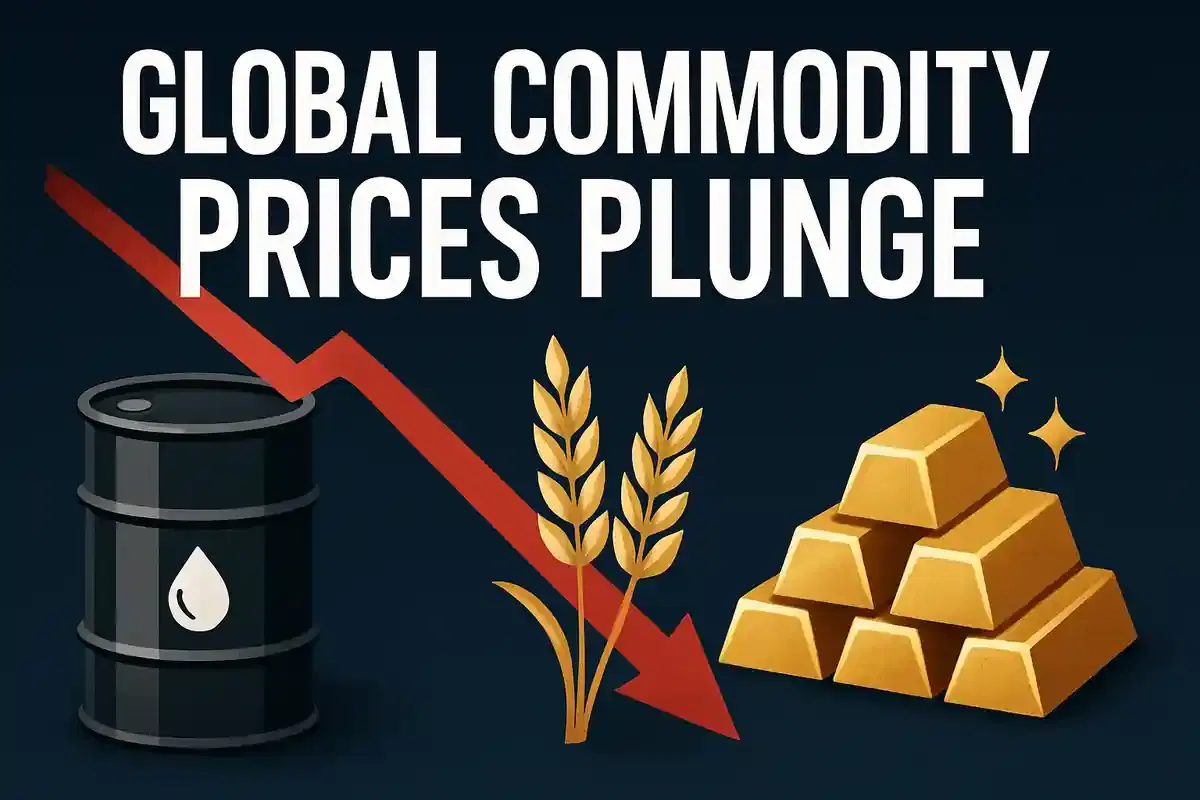World Bank Forecasts Falling Commodity Prices for Four Years, Lowest Since 2020
Commodities
|
29th October 2025, 2:42 PM

▶
Short Description :
Detailed Coverage :
The World Bank's latest Commodity Markets Outlook projects a continued decline in global commodity prices, with the trend expected to persist for a fourth year, hitting lows not seen since 2020. This forecast is primarily attributed to a growing surplus in the oil market and subdued global economic growth. The multilateral lender anticipates a broad 7% decrease in commodity prices for both 2025 and 2026, although prices are expected to remain above pre-pandemic averages. This easing of global energy and food costs is contributing to a cooling of inflation worldwide, particularly benefiting developing economies.
Key forecasts include oil prices averaging $60 a barrel in 2026, the lowest in five years, driven by slower demand growth and increased production. Overall energy prices are predicted to fall 12% in 2025 and another 10% in 2026. Food prices are projected to decrease by 6.1% in 2025, with a slight slip in 2026, aided by lower rice and wheat costs. However, a significant 21% jump in fertilizer costs is expected in 2025, which could negatively impact farm profitability and future crop yields.
Amidst geopolitical tensions and policy uncertainty, investors are increasingly seeking refuge in safe-haven assets. Gold prices are expected to soar by 42% in 2025 and continue their upward trajectory in 2026, while silver is also poised for record highs over the forecast period.
Impact This news has a moderate to high impact on the Indian stock market. Falling energy and food prices can help control inflation and reduce input costs for Indian businesses, potentially boosting consumer spending and corporate profits. However, the projected surge in fertilizer prices presents a direct challenge to India's agricultural sector, risking reduced farm incomes and higher food production expenses. The significant rise in gold and silver prices may attract investor capital towards these safe-haven assets, potentially diverting funds from equity markets and reflecting broader economic anxieties. The World Bank's advice for fiscal reforms also highlights an opportunity for India to strengthen its economic foundations. Impact Rating: 7/10
Difficult Terms Explained: Commodity Prices: The prices of raw materials or primary agricultural products that can be bought and sold, such as oil, gold, wheat, and copper. Oil Surplus: A situation where the supply of oil in the market is greater than the demand for it, leading to lower prices. EV Adoption: The increasing use and purchase of Electric Vehicles (cars powered by electricity). OPEC+: An alliance of oil-producing countries, including the Organization of the Petroleum Exporting Countries (OPEC) and other major oil producers like Russia, that coordinate production levels to influence global oil prices. Fiscal Reforms: Changes made to a government's spending and taxation policies to improve its financial health and economic management. Fuel Subsidies: Government financial assistance given to reduce the cost of fuel for consumers. La Niña: A climate pattern that occurs in the Pacific Ocean, characterized by cooler-than-average sea surface temperatures, which can lead to significant weather changes worldwide, including disruptions to agriculture.